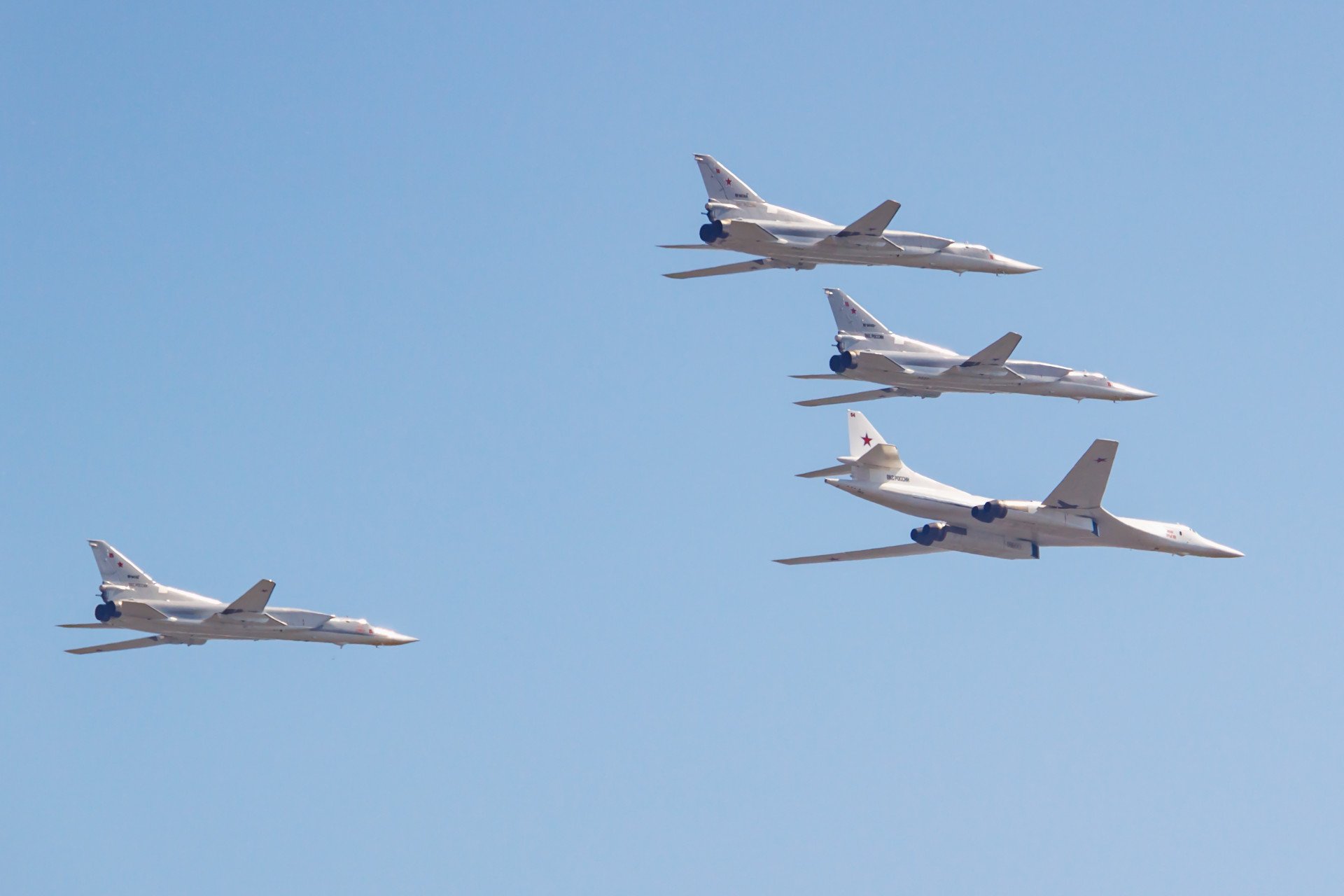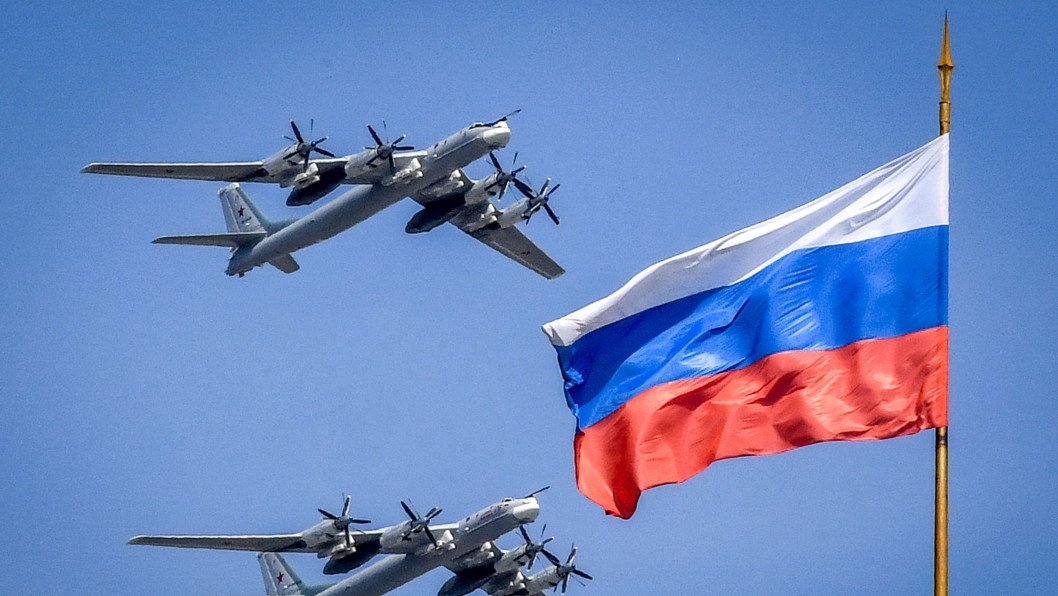- Category
- Latest news
Russia Relocates Strategic Bombers to Far East After Ukrainian Operation Spider Web, Satellite Images Show

Russia has begun relocating its fleet of strategic bombers—including the Tu-160, Tu-95MS, and Tu-22M3—to air bases in the Far East following a major Ukrainian drone strike that severely damaged multiple long-range aircraft.
The movements were revealed by satellite imagery analyzed by open-source intelligence (OSINT) analyst AviVector on June 12.
According to AviVector, the Russian military has dispersed its bombers to several locations: Yelizovo in Kamchatka, Anadyr in Chukotka, and Borisoglebskoye in Kazan. The redeployment appears to be a direct response to Ukraine’s successful targeting of Russia’s long-range aviation hubs.
🔻Satellite images of 🇷🇺 Yelizovo Airport as of June 11, 00:58 UTC
— AviVector (@avivector) June 11, 2025
The airbase housed 3 Tu-160 (Blackjack), several Il-20M (Coot-A), An-26 (Curl) and MiG-31 (Foxhound) interceptors.
After the Ukrainian drone attack on Belaya Airbase, Russia dispersed its Tu-160 bombers to other… pic.twitter.com/8X3shBfzoo
Key relocations
Seven Tu-160 bombers, previously stationed at the Belaya airbase in Irkutsk, had left the base by mid-last week. By Thursday morning, the last of three Tu-160s also departed from Olenya airbase in Murmansk, a former strategic hub. By Saturday, all Tu-95MS aircraft had also evacuated Olenya.
🔻High-resolution satellite images of 🇷🇺 Olenya Airbase as of June 3, 10:00 UTC
— AviVector (@avivector) June 4, 2025
This is a follow up to our previous post on Olenya Air Base. 4 Tu-95MSs (Bear-H) and 1 An-12 (Cub) can be seen clearly destroyed into pieces.
Also, the airbase housed 1 Il-76 (Candid), 3 An-12… pic.twitter.com/Sy6zJAET1FSatellite images confirmed that two Tu-160s were relocated to Anadyr, while three others, including one undergoing modernization, were spotted at Borisoglebskoye. Another three Tu-160s were seen at Yelizovo airbase in Kamchatka.
🔻Satellite images of 🇷🇺 Anadyr Airbase as of June 7, 00:09 UTC
— AviVector (@avivector) June 7, 2025
The airbase housed 2 Tu-160 (Blackjack).
After Ukrainian strikes on Russian airbases, Russia has dispersed its Tu-160 strategic bombers across multiple locations.
One of the Tu-160s from Belaya Airbase arrived at… pic.twitter.com/uvDaBbFyi1In the aftermath of the Ukrainian strike, 11 Tu-22M3 bombers were flown to the Ukrainka airbase in the Amur region from Olenya. Four Tu-95MS bombers from Engels-2 in Saratov were also transferred there. Meanwhile, six Tu-22M3 bombers arrived back at Engels-2, and four others landed in Mozdok, North Ossetia—a base that had been largely unused in recent months. Four Tu-22M3s were also observed at Borisoglebskoye.
🔻Satellite images of 🇷🇺 Mozdok Airbase as of June 9, 08:23 UTC
— AviVector (@avivector) June 9, 2025
The airbase housed 4 Tu-22M3 (Backfire-C), 1 An-12 (Cub) and 1 An-26 (Curl).
After today’s combat mission over the Black Sea, four Tu-22M3 bombers returned to Mozdok airbase, which had largely ceased to be actively… pic.twitter.com/4vzF4xxcr3
Russia loses key missile carriers
Before the Ukrainian strike, Belaya airbase housed 52 strategic bombers—35 Tu-22M3s, six Tu-95MSs, and seven Tu-160s—along with 30 MiG-31 interceptors and eight support aircraft. Following the attack, satellite imagery analyzed by OSINT analyst MarcinRogowsk14 showed smoke rising from the parking areas of two Tu-22M3s, two Tu-95MSs, and one Tu-160, suggesting they had been hit.
A total of 117 drones were deployed, each controlled by its own operator
SBU says the operation damaged or destroyed 34% of Russia’s strategic cruise missile carriers. This includes Tu-95 and Tu-22M3 bombers, A-50 airborne early warning aircraft, and possibly several transport planes. While exact figures remain unclear, reports suggest 41 aircraft were hit, with 13 destroyed, beyond any possibility of repair.

Russia has begun promoting a propaganda narrative downplaying the losses and claiming the attack was repelled. However, the SBU estimates the total cost of the damage at $7 billion.
Many of these losses are irreversible: the last Tu-22M3 was manufactured in 1993. Russia has no replacements for these aircraft nor for the Tu-95 or Tu-160. Existing plans for modernization are years away from implementation, if at all. In essence, Ukraine is dismantling the remnants of the Soviet aviation legacy that Russia still relies upon.
German Bundeswehr General Christian Freuding noted that Russia would now be forced to “tighten security measures” at its airfields, adding that up to 10% of Russia’s strategic bomber fleet may have been damaged in the strikes.

Earlier, Ukrainian Special Operations Forces, in coordination with other elements of the country’s defense, struck the Savasleyka airbase in Russia’s Nizhny Novgorod region.
The airfield is known to serve as a launch site for Russian attacks on Ukrainian territory, including hosting MiG-31K fighter jets armed with Kinzhal air-launched ballistic missiles.
“Russian forces use this military facility to conduct strikes against Ukraine. MiG-31K aircraft, which are carriers of Kinzhal missiles, regularly take off from this base,” the statement said.
Preliminary reports indicate that two Russian military aircraft were damaged in the strike, possibly a MiG-31 and either a Su-30 or Su-34.


-ce9a134791207c81306f56ab3d75ffb6.jpg)
-72b63a4e0c8c475ad81fe3eed3f63729.jpeg)
-45ed3be17a7bb74903649ed9258196f8.jpg)

